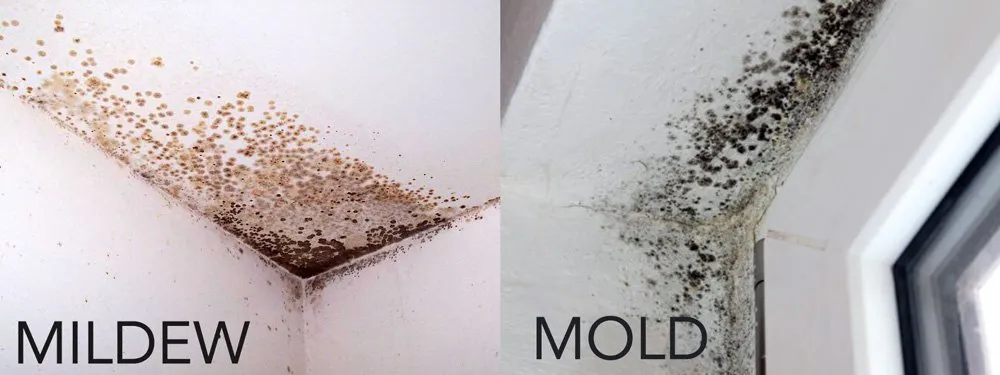Living in a beautiful city like San Diego has numerous perks; however, one thing that residents must be cautious about is the presence of mold in their homes. Mold, a common household problem, can have detrimental effects on your health if left untreated. This article will provide an overview of the various health risks associated with mold in San Diego homes, highlighting the importance of proactive measures and timely remediation to ensure a safe and healthy living environment for you and your loved ones.

Introduction
Welcome to this comprehensive article on the health risks associated with mold in San Diego homes. Mold is a common issue that many homeowners face, and it is important to understand the potential dangers it poses to your health. In this guide, we will discuss what mold is, the types of mold commonly found in San Diego homes, and the various health risks of mold exposure. By the end, you’ll have the knowledge you need to take action and protect yourself and your loved ones from the harmful effects of mold.
What is Mold?
Mold is a type of fungus that can be found indoors and outdoors. It thrives in moist and warm environments, making San Diego homes particularly susceptible to mold growth. Mold reproduces by releasing tiny spores into the air, and these spores can easily spread and settle on different surfaces. Once mold spores find a suitable environment, they can begin to grow and multiply, forming visible patches that range in color from black to green, and even pink or orange. While some types of mold are harmless, others can pose serious health risks.

Types of Mold Commonly Found in San Diego Homes
San Diego’s warm and humid climate creates the perfect conditions for mold growth. Several types of mold can commonly be found in homes throughout the area. One of the most common types is Stachybotrys chartarum, also known as black mold. This type of mold is usually black or dark green and can cause severe health issues. Another common type is Aspergillus, which is a group of molds that can come in various colors and may cause allergies and respiratory problems. Additionally, Cladosporium, Penicillium, and Alternaria are other types of mold frequently found in San Diego homes.

Health Risks of Mold Exposure
Exposure to mold can lead to a range of health problems, ranging from mild allergies to more severe respiratory issues and infections. It is important to understand the potential risks to your health if you have mold in your home and take appropriate measures to address the problem promptly.
Respiratory Issues
One of the primary health risks associated with mold exposure is the development or exacerbation of respiratory problems. Mold produces tiny particles, called mycotoxins, which can be inhaled and irritate the respiratory system. This can lead to symptoms such as coughing, wheezing, shortness of breath, and chest tightness. Individuals with pre-existing respiratory conditions, such as asthma or chronic obstructive pulmonary disease (COPD), are particularly susceptible to respiratory issues caused by mold exposure.
Allergic Reactions
Many people are allergic to mold, and exposure to mold spores can trigger allergic reactions. Common symptoms of mold allergies include sneezing, runny or stuffy nose, itchy and watery eyes, and skin rashes. These symptoms can be similar to those caused by other indoor allergens, such as dust mites or pet dander. If you notice that your symptoms worsen when you’re at home or in certain areas of your home, mold may be the culprit.
Infections
Certain types of mold can cause infections, especially in individuals with weakened immune systems. Mold spores can enter the body through the respiratory system or open wounds and lead to fungal infections. These infections can range from mild to severe and may require medical treatment. Symptoms of mold-related infections can vary but may include fever, flu-like symptoms, skin infections, and fungal sinusitis.
Toxic Reactions
In some cases, exposure to certain types of mold and their mycotoxins can lead to toxic reactions. Mycotoxins are toxic substances produced by molds that can cause a variety of health issues. Prolonged exposure to high levels of mycotoxins can result in symptoms such as headaches, dizziness, fatigue, neurological problems, and even organ damage in extreme cases. It is important to seek medical attention if you suspect mold-related toxicity.
Specific Health Conditions Aggravated by Mold
People with certain underlying health conditions can be more susceptible to the health risks associated with mold exposure. Individuals with allergies, asthma, or compromised immune systems are at higher risk for experiencing severe symptoms when exposed to mold. Additionally, individuals with chronic lung conditions, such as COPD, or those undergoing cancer treatment may also be more susceptible to mold-related health issues. It is crucial for individuals with these conditions to be proactive in addressing mold problems in their homes.

Conclusion
In conclusion, mold growth in San Diego homes can pose significant health risks. From respiratory issues to allergic reactions, infections, toxic reactions, and exacerbation of pre-existing health conditions, the dangers of mold exposure should not be taken lightly. It is important to address mold problems promptly and effectively to protect your health and the health of your loved ones. If you suspect mold in your home, consider consulting with a professional mold remediation specialist to assess the situation and take the necessary steps to eliminate the mold and prevent future growth. By doing so, you can create a safe and healthy living environment for you and your family.
